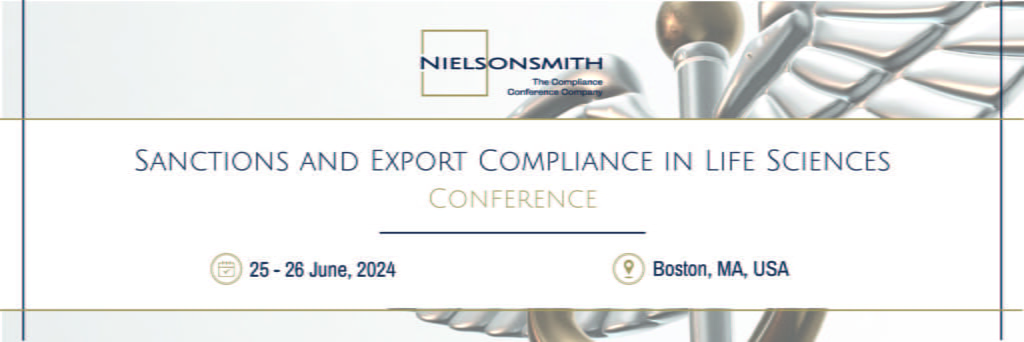Article by Galina Free:
Director, Global Trade Compliance at Danaher Corporation
Over recent years, the unprecedented surge in export rules and regulations has left many companies questioning whether their existing due diligence processes are equipped to handle the growing complexity. The mounting demand to identify restricted parties in specific industries or sectors, even when they aren’t listed in standard “entity” or “military end-user” lists, for example, has imposed substantial compliance burdens, leading companies to rely on manual and time-consuming due diligence processes.
One approach to identifying potentially “risky transactions” involves establishing rules within commercially available screening tools and training order management teams. However, both methods have their limitations. Screening tools may flag parties based on published “restricted lists.” Order management teams, while valuable, may lack the expertise of trade compliance professionals and can only perform initial screening based on their limited knowledge. Consequently, more and more transactions require manual review by the trade compliance department, which is unsustainable for companies handling hundreds or even thousands of orders daily.

Ms. Galina Free is a Speaker at Nielsonsmith Sanctions and Export Compliance in Life Sciences Conference, USA.
Companies that have invested significant resources and time in integration may find their current screening solutions struggle to keep up. In contrast, newer, more sophisticated screening and due diligence providers promise more robust solutions. But the high switching costs make transitioning to these newer providers challenging.
The combination of limited trade compliance resources, insufficient capabilities of commercially available screening and due diligence tools, and the rising volume of transactions requiring due diligence has made compliance more complicated and expensive than ever. So, what should trade compliance professionals consider in this complex landscape?
While there’s no one-size-fits-all solution, companies must tailor their trade compliance program to their specific supply chains, business models, and products. Here are some helpful strategies to consider:
Conduct a Risk Assessment:
Develop a company-specific risk matrix that takes into account destination risk, end-user risk, product risk, and perceived compliance risk. Calculate the risk score, which will be a foundation for shaping screening and due diligence decisions.

Document Screening Procedures and Standards, including:
- Identifying acceptable third-party screening providers.
- Defining roles and responsibilities across the screening process, from development to execution.
- Customizing screening requirements based on risk levels.
- Configuring screening criteria, including fuzzy matching, data cleansing, and language considerations.
- Determining when to conduct screening.
- Maintaining screening lists (global and country-specific).
- Setting testing requirements for screening providers.
- Establishing procedures for addressing positive screening hits and their resolution.
Identify Transactions Requiring Manual Review and Due Diligence:
Use the risk assessment to identify and prioritize transactions that necessitate in-depth review, such as examining end-user entity registration, conducting Google searches, reviewing Google Maps data, researching prior transactions, etc. Document your findings and decisions.
Review Government Agency Guidance:
Leverage the wealth of information provided by government agencies, as they can be valuable resources in navigating the complex world of trade compliance due diligence.
Continuous Training and Education:
Invest in ongoing training for your trade compliance professionals to keep them up-to-date with evolving regulations and technologies, enhancing their expertise in navigating trade compliance complexities.

Engage Legal and Compliance Experts:
Collaborate with legal and compliance experts to ensure that your screening and due diligence processes are legally sound and compliant with regulations. Share best practices and experiences with peers in your industry, as they may offer insights and solutions that have worked for them.
Monitor Regulatory Changes:
Stay vigilant about changes in export rules and regulations by subscribing to updates from regulatory authorities and industry associations to stay informed.
Remember that trade compliance is an ongoing process, and the ability to adapt and refine your procedures is crucial. While there is no one-size-fits-all solution, the strategies mentioned above can serve as a solid foundation for a comprehensive trade compliance program tailored to your specific needs.
About Galina Free:

Ms. Free has over fifteen years of Global Trade Compliance management and government negotiation experience. She oversees Danaher’s International Trade Controls and Compliance Program. In her role, she advises Danaher and its subsidiaries regarding various import and export laws, including export controls, economic sanctions, customs regulations, and antiboycott laws. She also supports subsidiaries across multiple trade disputes, oversees governmental audits and voluntary self-disclosures.
She develops Global Trade strategy, resource plan, and projects to support worldwide business growth and mitigate global trade challenges. She focuses on standardization and efficiency by leveraging harmonized international trade rules and harnessing trade analytics and data while simultaneously influencing government trade policy.
Related Events:



